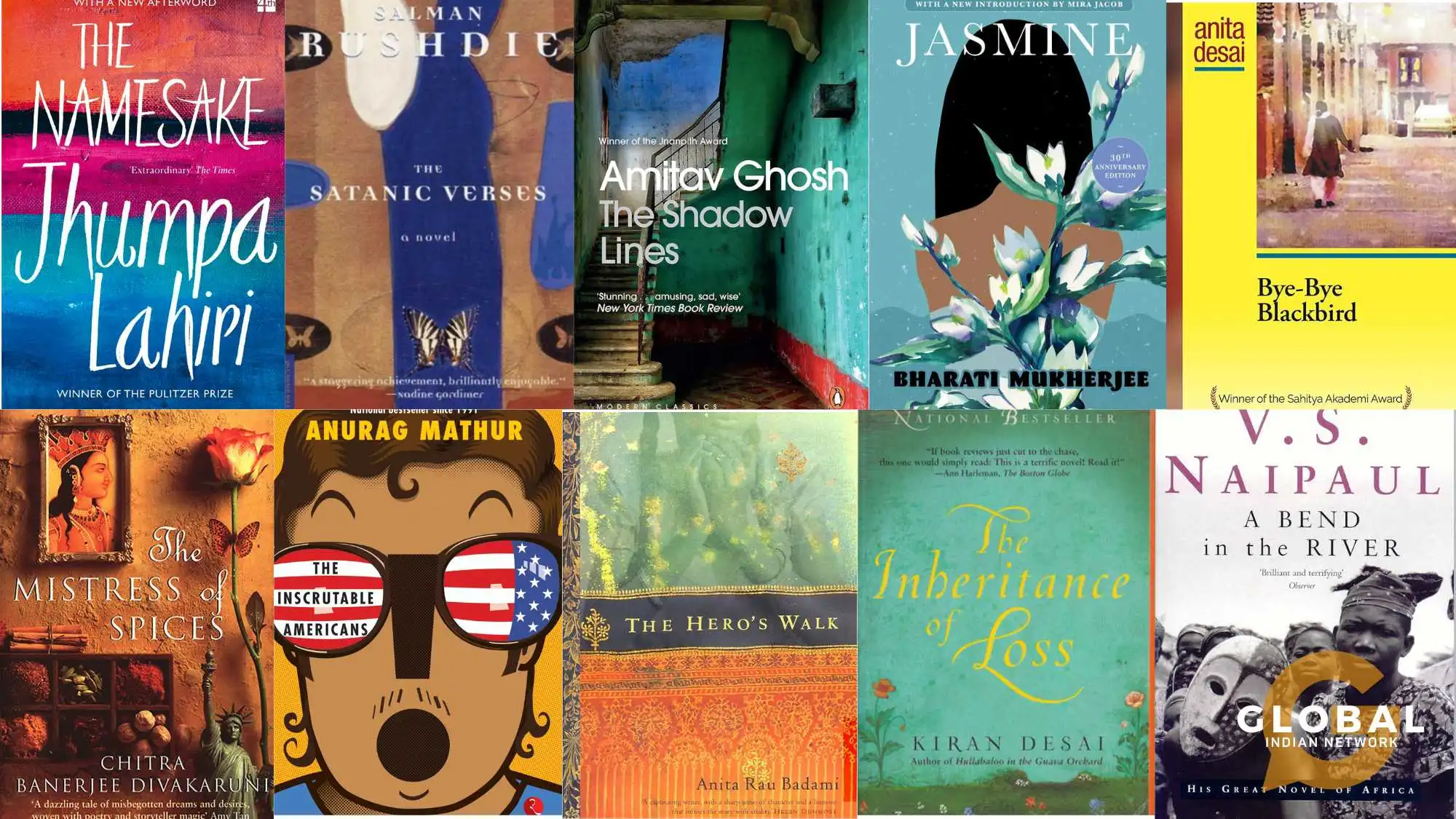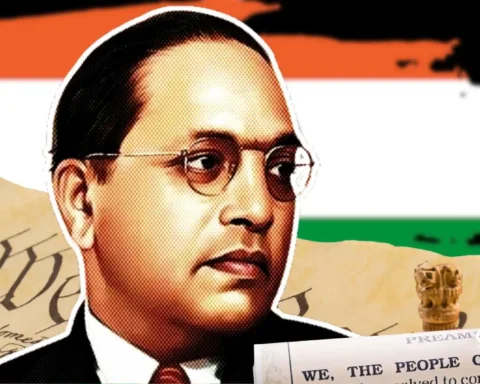Diaspora is the displacement of a community or culture into another geographical and cultural region. It comes from a Greek word meaning ‘to disperse’. Thus, it is a given that diasporic literature involves the profound use of space with the movement from the homeland to a foreign country, from the old to the new, from the familiar to the unfamiliar.
This desire for a homeland gave birth to diaspora literature. Indian diasporic writers write about nostalgia, marital and family relationships, the search for identity, and adapting to the multicultural environment. Their work explores questions of representation, dislocation, marginalization, migration, etc.
Table of Contents
Voices from Afar: The Unique Perspectives of Indian Diasporic Writers
The Indian diaspora is the second largest in the world, with an approximate population of 25 million. Post-colonial Indian diasporic writers usually follow a stereotyped style in their writing. They use techniques like stream of consciousness, immigration, alienation, and the adaptability of new land and culture, inviting readers from across countries.
Jhumpa Lahiri’s The Namesake
Jhumpa Lahiri is a Pulitzer Prize-winning author famous for her novels, such as “The Explainer of Disease” and “The Lowlands.” Her novels prominently feature the themes of nostalgia, memory, longing, and loss. The Namesake highlights the differences between cultures and the struggles and hardships of a Bangladeshi family in navigating conflicting traditions. Immigrating to the United States does not offer them the peaceful life they wished for, revealing the concepts of tradition and family expectations amid irreconcilable differences.
Salman Rushdie’s The Satanic Verses
Salman Rushdie was born in India and studied at Cambridge in England. He was known for his controversial works; The Satanic Verses was also published amid controversy and violence, because of which it is banned in various countries. The themes of his works revolve around migration and spiritual alienation. The Satanic Verses deals with the metaphor of migration by adopting the technique of magic realism.
Amitav Ghosh’s The Shadow Lines
The main theme that runs in Amitav Ghosh’s The Shadow Lines is partition. Events like the partition of India in 1947, the Second World War, and the communal riots in Bangladesh are mentioned to emphasize this theme. It’s essentially the boundaries that separate and alienate individuals, giving rise to separation anxiety. Brought up in a foreign land, it highlights the extent of rootlessness encountered by the characters.
Bharati Mukherjee’s Jasmine
Bharati Mukherjee was one of the Indian diasporic writers who lived and wrote in America. As an immigrant, she faced the problem of adapting to the traditions, culture, and society of a foreign country. She depicts her experience of living in an alien land through her novel Jasmine, which is a story about an Indian woman who tries to adapt to the American way of life. It is a struggle to find herself and transform from a submissive Indian wife to an independent Indo-American woman. With this, she moves from a “visible minority” to being “just another immigrant”.
Anita Desai’s Bye Bye Blackbird
Anita Desai is an Indian writer and a professor of humanities in Massachusetts. Bye Bye Blackbird, intimately related to the author, deals with the problem of adaptability. The racial and cultural prejudices faced by the immigrants put obstacles in their lives in the form of alienation, loss of identity, and humiliation. The title of the novel itself is England’s way of bidding farewell to an Indian “Black Bird”. The central problem is the most recurrent theme in Anita Desai’s work, i.e. marital maladjustment.

Indian Diasporic Writers: Bridging Cultures Through Literature
As the Indian Diaspora plays a crucial role in mirroring the complexities of diasporic experience, the works of Indian diasporic writers successfully bridge cultures through literature. They analyze the displacement from their homeland and the conflict between generations and cultural identity, as well as portray the cultural dilemmas and transformation of their identities during displacement.
Chitra Banerjee Divakurni’s The Mistress of Spices
Chitra Banerjee Divakaruni is a multifaceted diasporic writer who presents the intricate web of diasporic consciousness, including loneliness, rootlessness, cultural conflict, and other issues, with her main focus on South Asian migrants. In her novel The Mistress of Spices, the female protagonist is represented as a global cosmopolitan citizen, travelling between Eastern and Western cultures while facing an identity crisis while trying to assimilate in a given space. She helps the other female migrant characters through their troubles.
Anurag Mathur’s Inscrutable Americans
This text proves that moving from one land to another is important to set in motion a positive change in the originating nation, which, in this case, is India. Inscrutable Americans uses humor to mock the Indians in modern America. The experiences of the protagonist show the differences between America and India and the need for globalization for India, coupled with the anxiety of seeing a new ‘global’ India. In the end, it shows that change is not only about material advantages but also a psychological inclination for an improved homeland.
Anita Rao Badami’s The Hero’s Walk
Anita Rao Badami is an Indian Canadian writer best known for her award-winning novel The Hero’s Walk. Her works are concerned with the complexities of Indian family life and the cultural gap of Western immigrants. Similarly, this book also describes the problems of family life and, ultimately, how peace evolved in the family at the end.
Kiran Desai’s The Inheritance of Loss
The Inheritance of Loss is a twenty-first-century diasporic novel by Kiran Desai. The coexistence of history, myth, and contemporary life captures the essence of this book. Settling in an unfamiliar land causes the characters to experience dislocation and, hence, break up from their old identity. Non-acceptance and ethnic discrimination alienate the individuals, giving rise to loneliness.
V.S.Naipaul’s A Bend in the River
This story is narrated by an ethnically Indian Muslim in an African country. Set during Independence, the scene is of chaos, violent change, isolation, and a lack of preparation for the modern world. The historical upheaval and social breakdown highlighted by Naipaul show his imaginative power and unique way of portraying the Indian diaspora.
RELATED ARTICLES:
- Top 10 Diasporic Writers You Should Be Reading Right Now
- Understanding Diaspora Literature: From Margins to Mainstream Recognition
Conclusion
Literature is an eminent medium through which migrant experiences are conveyed from generation to generation. Literary texts carry a perception of the past together with an insight into the future, thus creating transnational identities. The books recommended above by some of the Indian diasporic writers talk about such multinational identities who struggle to fit into one specific “category.”
Some writers are displaced, i.e. those who used to live in India, and there are also uprooted writers or those who have always lived abroad. However, all of them face the same issues of alienation, which they try to dispel or face in their novels.

FAQs
Who are the major Indian diasporic writers?
Some of the major Indian diasporic writers include V.S. Naipaul, Anita Desai, Bharati Mukherjee, Salman Rushdie, and Meena Alexander, among many others.
What is a diasporic writer?
A diasporic writer is an individual who resides outside their homeland and produces literature whose substance is connected to their native land, projecting a feeling of nostalgia.
What is Indian diaspora literature?
Indian diaspora literature is a body of literature written by Indian authors who also belong to foreign lands, i.e., authors who have either been displaced or uprooted and hence no longer live in India.









